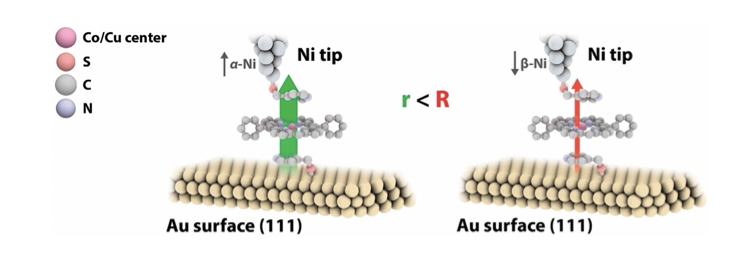Magnetoresistance in metalloporphyrin-based wires at RT

Nature has developed supramolecular constructs capable to show extremely efficient charge-transport rates using metalloporphyrin-based supramolecular arrays. Thus, they are promising candidates for nanoelectronic devices. In the past, trapping individual molecules between the two electrodes of a Scanning Tunneling Microscope, we demonstrated the capability to tune the transport properties based on the conformational change of the metalloporphyrin with respect to the electron pathway. The conductance difference between a planar conformation and a tilted one resulted in an increase of 3 orders of magnitude.
In our most recent publication, employing metalloporphyrin-based wires based on ferromagnetic metal centres, we were capable to observe and tuning the magnetoresistance effects under spin-dependent charge transport through the molecular wires. Remarkably, magnetoresistance effects were detectable only under the metalloporphyrins’ planar conformation where the electron pathway involves the metal centre rather than the porphyrin ring.
Further info:
Albert C. Aragonès, Alejandro Martín-Rodríguez, Daniel Aravena, Giuseppe di Palma, Wenjie Qian, Josep Puigmartí-Luis, Nfflria Aliaga-Alcalde, Arántzazu González-Campo, Ismael Díez-Pérez, and Eliseo Ruiz. Room-Temperature Spin-Dependent Transport in Metalloporphyrin-Based Supramolecular Wires. Angew. Chem. Int. Ed. 2021, 60, 2–10 (doi.org/10.1002/anie.202110515).
